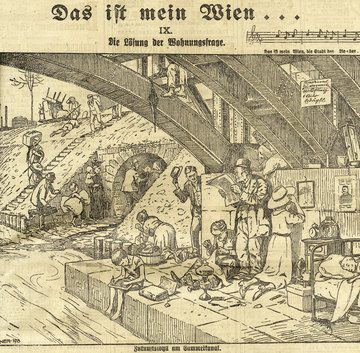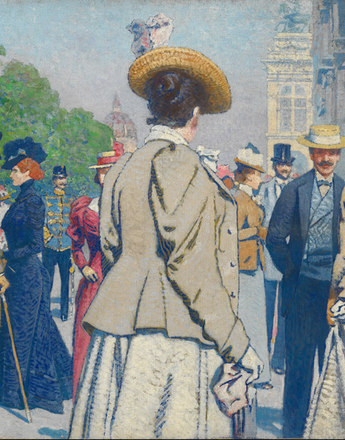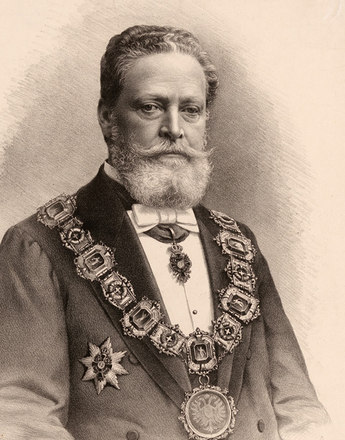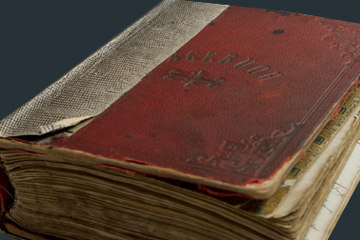The growing city: Vienna on the eve of the First World Wa
By 1910 Vienna had grown to become an international metropolis with around 2.1 million inhabitants and worldwide cultural and scientific significance.
‘We believe that humanity is entering into a long and blessed period of peace’ – an assumption that was soon to prove hugely incorrect.
Quoted from: Rauchensteiner, Manfried: Krieg als Chiffre des Friedens. Österreich-Ungarns letzter Krieg, in: Pfoser, Alfred/Weigl, Andreas (Hrsg.): Im Epizentrum des Zusammenbruchs. Wien im Ersten Weltkrieg, Wien 2013, 32
Under the Christian Socialist mayor Karl Lueger (1844–1910), who had held office since 1897, the main utilities in the city (gas, electricity, trams) came under the responsibility of the city council, and the social infrastructure (schools, hospitals, nursing homes, water supply) was considerably enlarged. Housing, by contrast, was almost completely in the hands of private enterprises and did not keep up with the population growth. The Stadtbahn (suburban railway), originally steam-driven, offered Vienna a second means of mass transport besides the trams, although the routes that the two types of transport served fulfilled different purposes. From 1913, a new era of public transport started as the first horse-drawn lines were mechanized. The council also planned – not for the first time – an underground railway. In October 1913 the new municipal grain silo opened, but it was soon to prove completely inadequate for a long war. Construction work came practically to a standstill during the war. Many projects planned before 1914 were not completed after the war broke out – such as the underground railway or the new municipal museum on the Schmelz.
In 1904/05, as an expression of a farsighted urban development policy, the Danube communities of Florisdorf, Jedlesee, Gross-Jedlersdorf, part of Strebersdorf, Leopoldau, Stadlau and Aspern were incorporated to become the 21st district of Vienna. The area of the city increased as a result by around 50 per cent to 278 km² and the population to over 2 million. The new district of Floridsdorf had an area of 99 km², more than a third of the total area of the city, and was to function as a large industrial and commercial centre. In 1905 the decision was also made to create a green forest belt around the city. The Christian Socialist city council financed the extensive projects by means of bond issues. In May 1914 an investment loan of 375 million crowns was taken out for further modernization, but it had to be used in 1916 to buy food and other necessities required to ease the critical situation.
According to the 1910 census, the population of Vienna was around 2.1 million, and the city was expected to expand further to as much as 4 million. Vienna was an immigrant city, with Czechs and Jews leading the way. At the start of the war the population had reached around 2.15 million, and it attained its highest level of 2.3 to 2.4 million (including troops, refugees and war casualties) in spring 1915, paradoxically at a time when around 100,000 Viennese were at the front. By late autumn 1918 the population fell again to around 2.1 million.
Alongside the development of the city, the economy also experienced an upswing. Historians often describe the last years before the war as a ‘second Gründerzeit’, although the economic growth had already slackened off before the war began. The war itself marked a definite break in the city’s development. Vienna’s economy was a mixture of major industry and small businesses, with small and medium-sized enterprises predominating in terms of numbers and employees.
The social democratic movement in Vienna was also growing. Some 500,000 people turned out to watch the funeral procession of the murdered party leader Franz Schuhmeier on 11 February 1913. At the Reichsrat elections in June 1913 the Social Democrats won a majority in Vienna for the first time, a clear indication of a political paradigm shift, which did not fully take hold until after the war. Shortly before the First World War a local development programme was adopted, which was to be the core of the future Red Vienna.
Translation: Nick Somers
Mertens, Christian: Richard Weiskirchner (1861-1926). Der unbekannte Wiener Bürgermeister, Wien/München 2006
Pfoser, Alfred/Weigl, Andreas: Die Pflicht zu sterben und das Recht zu leben. Der Erste Weltkrieg als bleibendes Trauma in der Geschichte Wiens, in: Pfoser, Alfred/Weigl, Andreas (Hrsg.): Im Epizentrum des Zusammenbruchs. Wien im Ersten Weltkrieg, Wien 2013, 14-31
Weigl, Andreas: Eine Stadt stirbt nicht so schnell. Demographische Fieberkurven am Rande des Abgrunds, in: Pfoser, Alfred/Weigl, Andreas (Hrsg.): Im Epizentrum des Zusammenbruchs. Wien im Ersten Weltkrieg, Wien 2013, 62-71
-
Chapters
- The growing city: Vienna on the eve of the First World Wa
- The war takes over the city
- Rebuilding for war: barracks and hospitals in Vienna
- Vienna as a refugee camp
- Vienna as a centre of the war economy
- Goodbye to the world of yesterday
- Self-help: unofficial allotments and deforesting the Vienna Woods
- Overthrow of the old values: post-war Vienna







